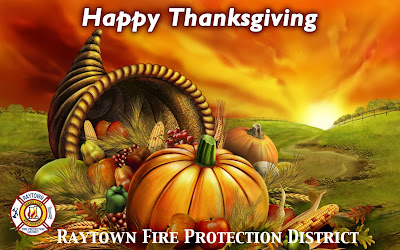As the temperature turns colder the Raytown Fire Protection District sees an increase in the number of carbon monoxide related calls for service. Carbon monoxide (CO) is a odorless invisible gas produced whenever any fuel such as gas, oil, kerosene, wood, or charcoal is burned. As the winter months come upon us, our use of fuel for heating increases, thereby increasing the potential for elevated levels of carbon monoxide.
Nationwide, hundreds of people die accidentally every year from CO poisoning caused by malfunctioning or improperly used fuel-burning furnaces or appliances. Infants, elderly people, unborn babies, and people with anemia or with a history of heart or respiratory disease can be especially susceptible. Symptoms of CO poisoning may include headache, dizziness, weakness, nausea, vomiting, sleepiness, and confusion. Do not ignore symptoms, particularly if more than one person is feeling them. If you suspect CO poisoning, get outside to fresh air immediately, and then call 911.
Techniques to reduce the risk of CO poisoning in your home when using fuel-burning devices include:
- Have a trained professional inspect, clean, and tune-up central heating system (furnaces, flues, and chimneys) annually. Repair any leaks promptly.
- Install CO alarm(s) with battery backup outside of sleeping areas.
- Test your CO alarm(s) frequently and replace dead batteries.
- Do not use a gas oven to heat your home, even for a short time.
- Keep gas appliances properly adjusted.
- Install and use an exhaust fan vented to outdoors over gas stoves.
- Do not use any gasoline-powered engines, such as portable generators, in enclosed spaces, including your garage, and locate them at least 10 feet from your house with the exhaust facing away from the building.
- Do not idle your vehicle inside your garage.
- Do not sleep in any room with an unvented gas or kerosene space heater.
- Make certain that doors on all wood stoves fit tightly.
















